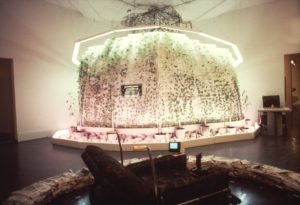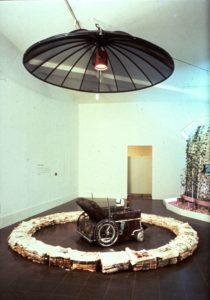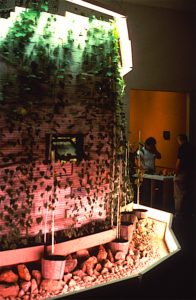Mixed media, electronic-interactive installation. 15Í x 33Í x 33Í. Site-specific installation at the Brooklyn Museum that addressed the power structures; social, economic, and media that control peoples lives and confine them to the ghetto. Includes wooden wall structure with climbing morning glories, grow lights, a money tree behind the wall and in the foreground a motorized wheelchair with video game.
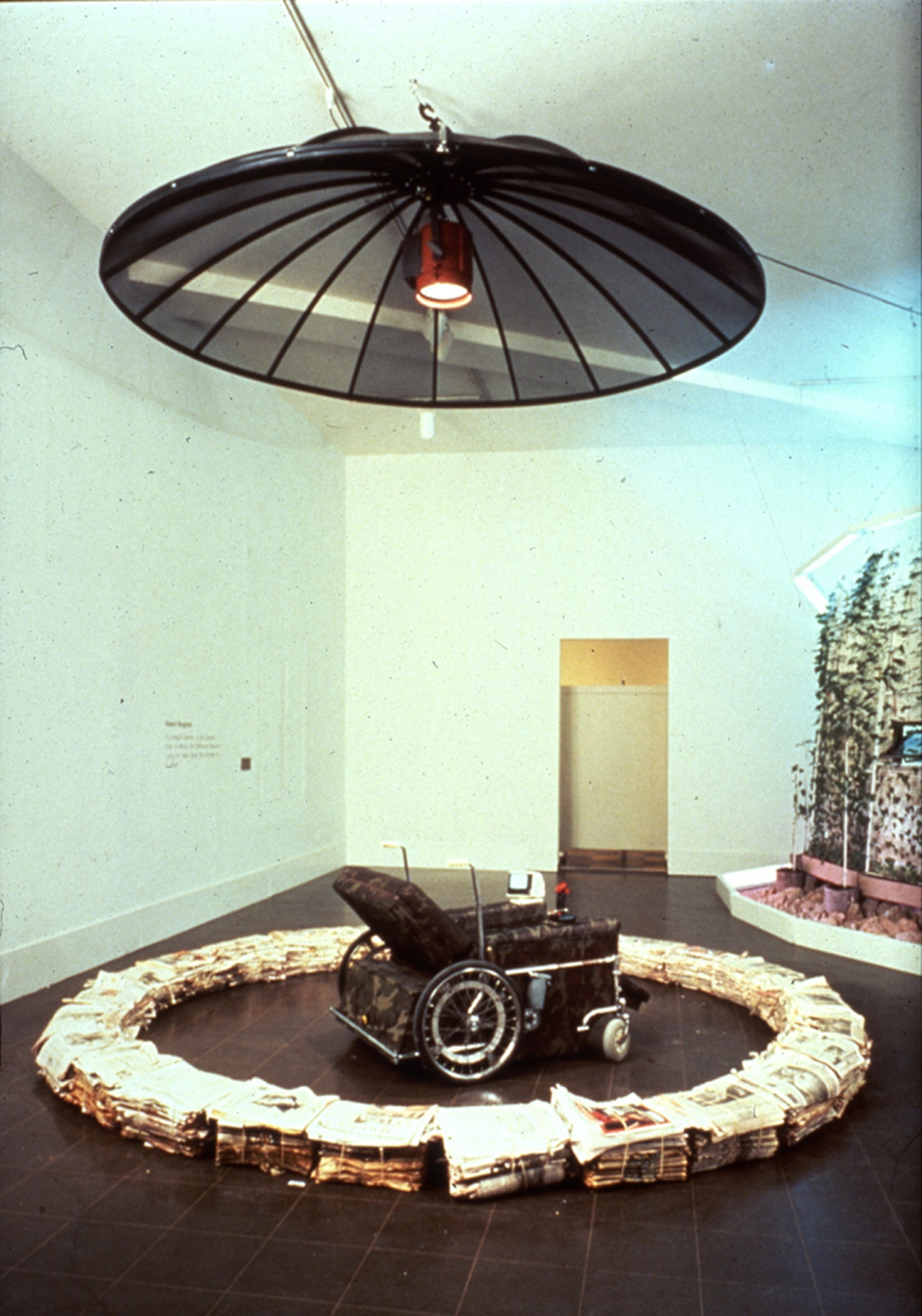
Other Projects
Public Art
-
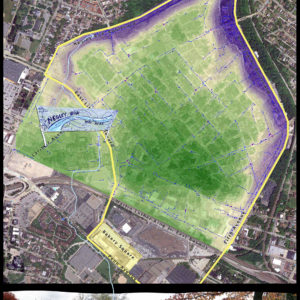 Living Waters of Larimer, 2012-2016
Living Waters of Larimer, 2012-2016
-
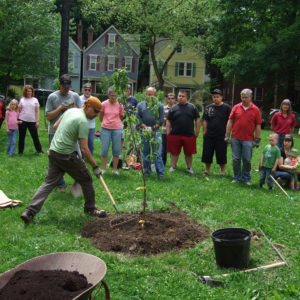 Permaculture Orchard, 2011
Permaculture Orchard, 2011
-
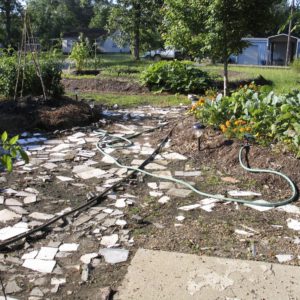 One Mile Garden, 2008—present
One Mile Garden, 2008—present
-
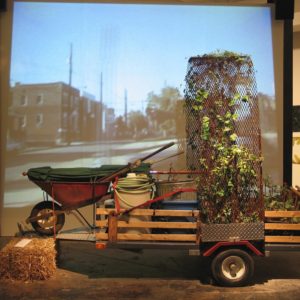 WeGrow, 2004-2006
WeGrow, 2004-2006
-
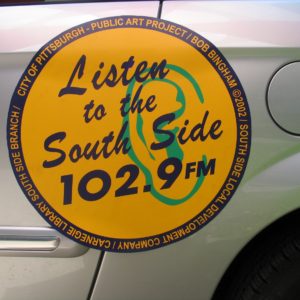 Listen to the South Side, 2000-2004
Listen to the South Side, 2000-2004
-
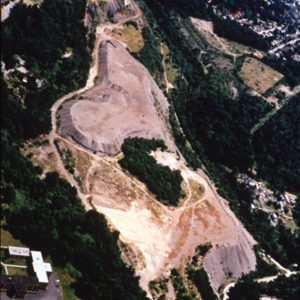 Nine Mile Run Greenway Project, 1996-2000
Nine Mile Run Greenway Project, 1996-2000
-
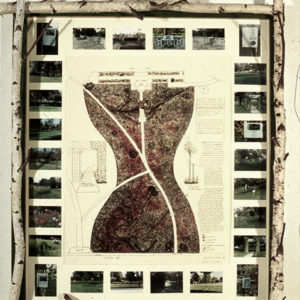 Urban Semi-Wilderness Area, 1994-1998
Urban Semi-Wilderness Area, 1994-1998
-
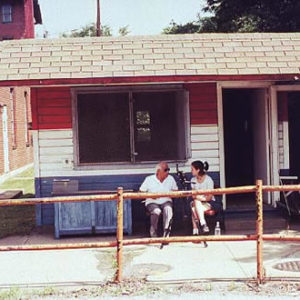 Barletta’s News, 1994
Barletta’s News, 1994
-
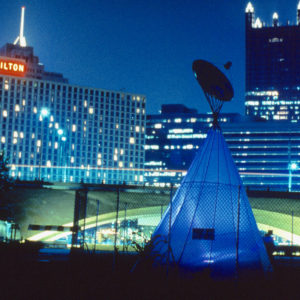 Commemorative Monument to Native Americans, 1993
Commemorative Monument to Native Americans, 1993
-
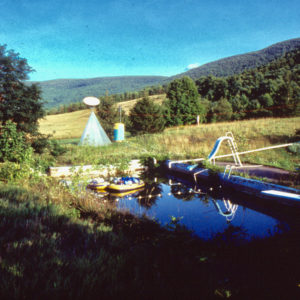 Water Rites: A Domestic Arrangement, 1991
Water Rites: A Domestic Arrangement, 1991
-
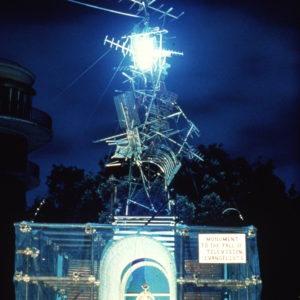 Monument to the Fall of the Television Evangelists, 1988
Monument to the Fall of the Television Evangelists, 1988
Installations
-
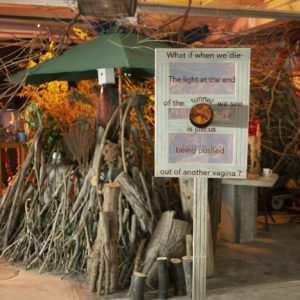 Still Life #9
Still Life #9
-
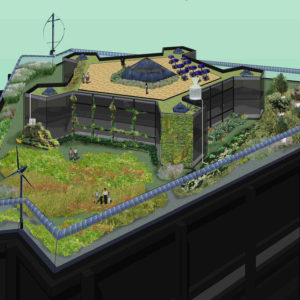 The NEW R5 Travel Agency, 2008
The NEW R5 Travel Agency, 2008
-
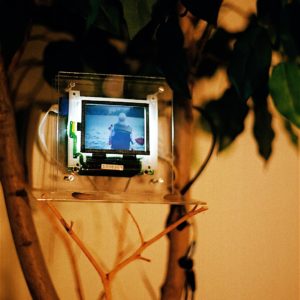 Following in My Father’s Footsteps, 2003
Following in My Father’s Footsteps, 2003
-
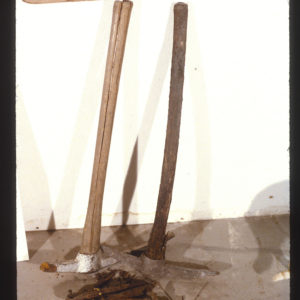 An Island For 2 Axe Heads, A String..., 1996
An Island For 2 Axe Heads, A String..., 1996
-
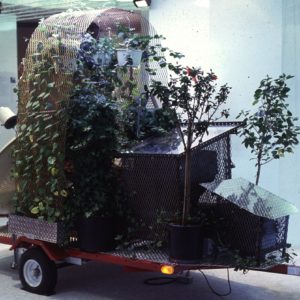 Eco-Mobile Home/Office Entertainment System, 1993
Eco-Mobile Home/Office Entertainment System, 1993
-
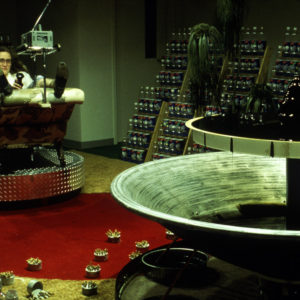 The Persian Gulf Bowl, 1992
The Persian Gulf Bowl, 1992
-
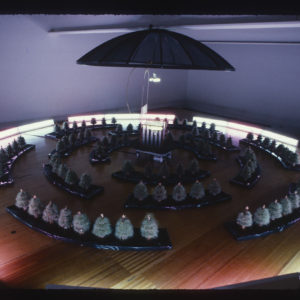 As We Turn with the World, 1991
As We Turn with the World, 1991
-
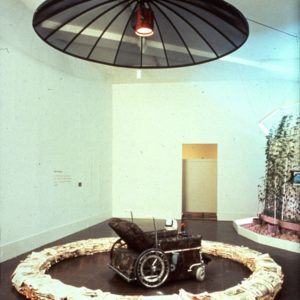 It’s Always Greener on the Greener side, OR..., 1990
It’s Always Greener on the Greener side, OR..., 1990
-
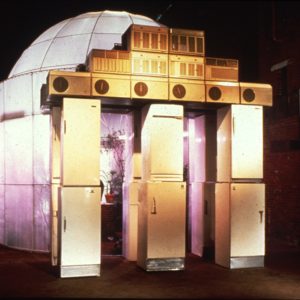 The Pantheozone: Temple To The Ozone, 1989
The Pantheozone: Temple To The Ozone, 1989
Proposals
-
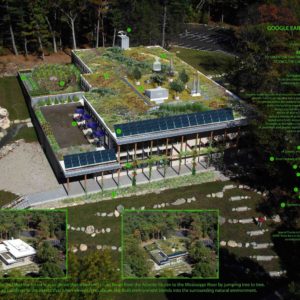 Google Earth Camouflage, A Revision Request, An Ecoart..., 2008
Google Earth Camouflage, A Revision Request, An Ecoart..., 2008
-
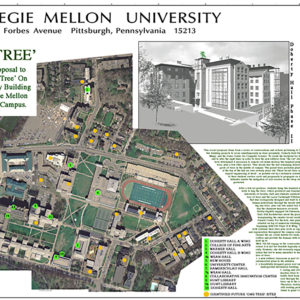 One Tree EcoArt Proposal, 2007
One Tree EcoArt Proposal, 2007
-
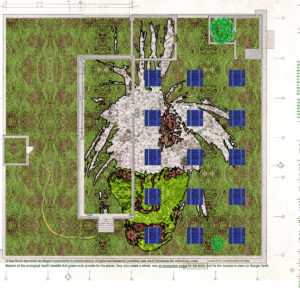 Greening the Andy Warhol Museum: It’s for the..., 2007
Greening the Andy Warhol Museum: It’s for the..., 2007
-
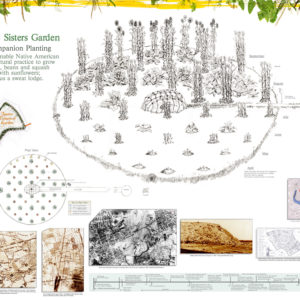 3 Sisters Garden, 2003
3 Sisters Garden, 2003
-
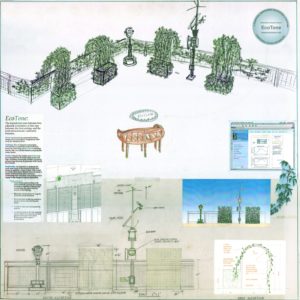 Ecotone: A Public Art Proposal for the David..., 2002
Ecotone: A Public Art Proposal for the David..., 2002
-
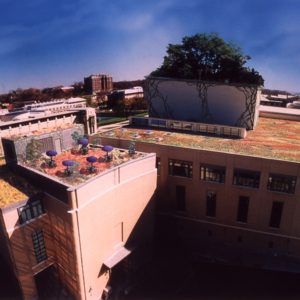 Greening Purnell: Site-Specific Sculpture Proposal to Integrate Nature..., 2000
Greening Purnell: Site-Specific Sculpture Proposal to Integrate Nature..., 2000
